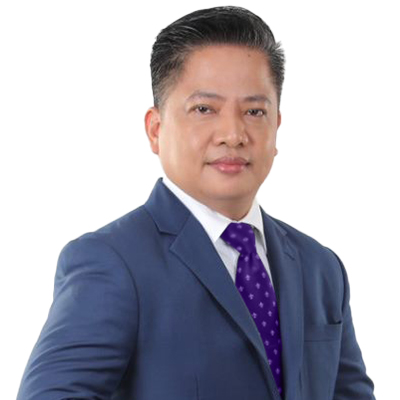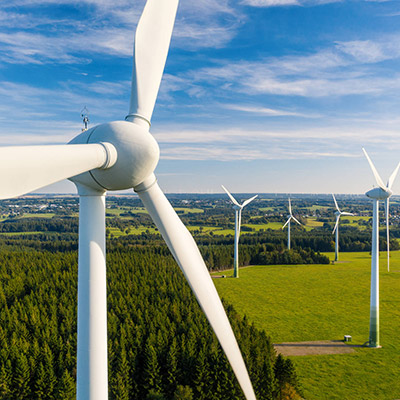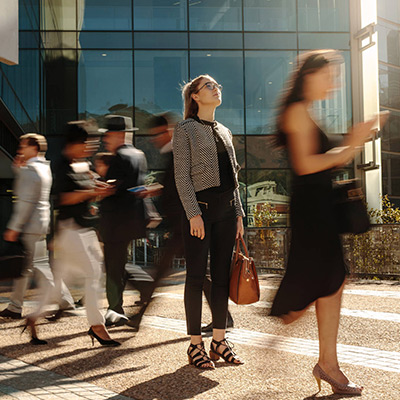-
Audit approach overview
Our audit approach will allow our client's accounting personnel to make the maximum contribution to the audit effort without compromising their ongoing responsibilities
-
Annual and short period audit
At P&A Grant Thornton, we provide annual and short period financial statement audit services that go beyond the normal expectations of our clients. We believe strongly that our best work comes from combining outstanding technical expertise, knowledge and ability with exceptional client-focused service.
-
Review engagement
A review involves limited investigation with a narrower scope than an audit, and is undertaken for the purpose of providing limited assurance that the management’s representations are in accordance with identified financial reporting standards. Our professionals recognize that in order to conduct a quality financial statement review, it is important to look beyond the accounting entries to the underlying activities and operations that give rise to them.
-
Other Related Services
We make it a point to keep our clients abreast of the developments and updates relating to the growing complexities in the accounting world. We offer seminars and trainings on audit- and tax-related matters, such as updates on Accounting Standards, new pronouncements and Bureau of Internal Revenue (BIR) issuances, as well as other developments that affect our clients’ businesses.
-
Tax advisory
With our knowledge of tax laws and audit procedures, we help safeguard the substantive and procedural rights of taxpayers and prevent unwarranted assessments.
-
Tax compliance
We aim to minimize the impact of taxation, enabling you to maximize your potential savings and to expand your business.
-
Corporate services
For clients that want to do business in the Philippines, we assist in determining the appropriate and tax-efficient operating business or investment vehicle and structure to address the objectives of the investor, as well as related incorporation issues.
-
Tax education and advocacy
Our advocacy work focuses on clarifying the interpretation of laws and regulations, suggesting measures to increasingly ease tax compliance, and protecting taxpayer’s rights.
-
Business risk services
Our business risk services cover a wide range of solutions that assist you in identifying, addressing and monitoring risks in your business. Such solutions include external quality assessments of your Internal Audit activities' conformance with standards as well as evaluating its readiness for such an external assessment.
-
Business consulting services
Our business consulting services are aimed at addressing concerns in your operations, processes and systems. Using our extensive knowledge of various industries, we can take a close look at your business processes as we create solutions that can help you mitigate risks to meet your objectives, promote efficiency, and beef up controls.
-
Transaction services
Transaction advisory includes all of our services specifically directed at assisting in investment, mergers and acquisitions, and financing transactions between and among businesses, lenders and governments. Such services include, among others, due diligence reviews, project feasibility studies, financial modelling, model audits and valuation.
-
Forensic advisory
Our forensic advisory services include assessing your vulnerability to fraud and identifying fraud risk factors, and recommending practical solutions to eliminate the gaps. We also provide investigative services to detect and quantify fraud and corruption and to trace assets and data that may have been lost in a fraud event.
-
Cyber advisory
Our focus is to help you identify and manage the cyber risks you might be facing within your organization. Our team can provide detailed, actionable insight that incorporates industry best practices and standards to strengthen your cybersecurity position and help you make informed decisions.
-
ProActive Hotline
Providing support in preventing and detecting fraud by creating a safe and secure whistleblowing system to promote integrity and honesty in the organisation.
-
Sustainability
At P&A Grant Thornton sustainability is at the core of our mission. We are committed to fostering a healthier planet through innovative practices that reduce our environmental footprint, promote social responsibility, and ensure economic viability for future generations.
-
Accounting services
At P&A Grant Thornton, we handle accounting services for several companies from a wide range of industries. Our approach is highly flexible. You may opt to outsource all your accounting functions, or pass on to us choice activities.
-
Staff augmentation services
We offer Staff Augmentation services where our staff, under the direction and supervision of the company’s officers, perform accounting and accounting-related work.
-
Payroll Processing
Payroll processing services are provided by P&A Grant Thornton Outsourcing Inc. More and more companies are beginning to realize the benefits of outsourcing their noncore activities, and the first to be outsourced is usually the payroll function. Payroll is easy to carve out from the rest of the business since it is usually independent of the other activities or functions within the Accounting Department.
-
Our values
Grant Thornton prides itself on being a values-driven organisation and we have more than 38,500 people in over 130 countries who are passionately committed to these values.
-
Global culture
Our people tell us that our global culture is one of the biggest attractions of a career with Grant Thornton.
-
Learning & development
At Grant Thornton we believe learning and development opportunities allow you to perform at your best every day. And when you are at your best, we are the best at serving our clients
-
Global talent mobility
One of the biggest attractions of a career with Grant Thornton is the opportunity to work on cross-border projects all over the world.
-
Diversity
Diversity helps us meet the demands of a changing world. We value the fact that our people come from all walks of life and that this diversity of experience and perspective makes our organisation stronger as a result.
-
In the community
Many Grant Thornton member firms provide a range of inspirational and generous services to the communities they serve.
-
Behind the Numbers: People of P&A Grant Thornton
Discover the inspiring stories of the individuals who make up our vibrant community. From seasoned veterans to fresh faces, the Purple Tribe is a diverse team united by a shared passion.
-
Fresh Graduates
Fresh Graduates
-
Students
Whether you are starting your career as a graduate or school leaver, P&A Grant Thornton can give you a flying start. We are ambitious. Take the fact that we’re the world’s fastest-growing global accountancy organisation. For our people, that means access to a global organisation and the chance to collaborate with more than 40,000 colleagues around the world. And potentially work in different countries and experience other cultures.
-
Experienced hires
P&A Grant Thornton offers something you can't find anywhere else. This is the opportunity to develop your ideas and thinking while having your efforts recognised from day one. We value the skills and knowledge you bring to Grant Thornton as an experienced professional and look forward to supporting you as you grow you career with our organisation.
“The end of something marks the start of something new.”
We often hear these reassuring words when we go through the end of a journey. However, you can also attribute these words to the concept of Circular Economy. These words are also somehow similar to what Antonine de Lavoiser, the great chemist and mathematician in the 18th century, noted in his experiments, “Nothing is lost, nothing is created, everything is transformed” – it suggests that nothing is lost thus should undergo a transformation to be continually repurposed and reintegrated into the economy.
The words of Antonine were adopted by the global community to advocate the concept of circular economy – a transformative philosophy that challenges the conventional linear “take-make-waste” approach with a more sustainable approach to resource management.
Understanding the Circular Economy
According to the European Parliament, “Circular Economy is a model of production and consumption, which involves sharing, leasing, reusing, repairing, refurbishing and recycling existing materials and products as long as possible. In this way, the life cycle of products is extended.”
In contrast to the conventional “take-make-waste” model of production and consumption, the circular economy aims to create a closed-loop system wherein when a product reaches the end of its life, its materials are kept within the economy which are continually being reused, repurposed, and recycled.
Per Ellen Macarthur Foundation, the circular economy is guided by three principles, all centered around thoughtful design:
1. Eliminate Waste and Pollution
Despite the belief that waste is inevitable, it's largely a result of how things are designed. Nature doesn't produce waste; it's a concept people introduced. In a circular economy, we treat waste as a “design flaw”. Everything should be designed to allow materials to re-enter the economy when they're no longer in use. This shift transforms the linear "take-make-waste" system into a circular one, where products are maintained, shared, reused, repaired, refurbished, and, as a last option, recycled. Even biological materials can be returned to nature to regenerate the land.
2. Circulate Products and Materials (at their Highest Value)
The goal here is to keep materials in use, either as products or as components/raw materials. This prevents anything from becoming waste and retains the value of products and materials. Two fundamental cycles come into play: the technical cycle (focused on maintenance, reuse, repair, refurbishment, and eventual remanufacture or recycling) and the biological cycle (for biodegradable materials that can be composted or used to regenerate the land).
3. Regenerate Nature
Shifting from a linear to a circular economy allows us to support natural processes and create space for nature to thrive. Instead of continuously degrading the environment, we aim to build natural capital. This means adopting farming practices that enhance soil health and biodiversity and returning biological materials to the earth. The circular economy's third principle emphasizes not just minimizing harm to the environment but actively improving it, following the example of nature's waste-free systems.
Asian Development Bank in its Technical Assistance Consultant’s Report on Circular Economy in the Philippines argues that the Circular Economy is a comprehensive strategy for economic progress with the goal of benefiting both businesses and society while safeguarding the environment. Furthermore, it recognizes that it is intentionally designed to restore and regenerate resources, and it seeks to break the link between economic growth and the consumption of finite resources.
This aligns with the Ellen MacArthur Foundation's statement from 2015, which emphasizes that in a circular economy, economic growth is driven by enhancing the value derived from existing products and materials rather than simply increasing their volume. This is achieved by using the following economic concepts:
- Preserving and Enhancing Natural Capital - Managing finite resources and balancing renewable resource usage to protect and enhance our natural environment.
- Optimizing Resource Yields - Maximizing the utility of products, components, and materials by keeping them in use for longer periods.
- Fostering System Effectiveness - Identifying and eliminating negative externalities in the economic system through proactive design, making the entire system more efficient and sustainable.
Circular Economy in the Philippines
The concept of a circular economy is highly relevant within the context of the Philippine Action Plan for Sustainable Consumption and Production (PAP4SCP) as it presents a promising solution and concrete pathways toward achieving sustainable consumption and production and, consequently, a sustainable economy.
The recent developments in the Philippines, including the release of the PAP4SCP and the passage of the Extended Producer Responsibility (EPR) Act of 2022, which we have highlighted in parts 1 and 2 of this three-part article, have raised hopes among advocates of a circular economy in the country. However, some organisations view these developments as another “checkbox” or “roadblock” in doing business.
In light of the ever-evolving sustainability and circular economy regulations, it's essential to recognize that international regulations can significantly impact how businesses operate in the Philippines. A notable example is the proposed EU (European Union) Packaging Regulation, set to replace the EU Packaging Waste Directive and expected to come into effect in late 2024. This regulation will not only affect businesses based in the EU but also those that import packaging into the EU.
We've witnessed how EU regulations have had a profound impact on organisations that export products to Europe. Given the influential sphere of the EU on the global stage, it's likely that other countries will adopt similar approaches. Therefore, when we discuss the circular economy, it extends beyond our national borders (the Philippines). Looking ahead (perhaps not immediately, but in the future), it's crucial to consider the possibility of a "Global Circular Economy" where the regulations of one country can affect all nations engaged in business with that country. Consequently, organizations should prepare to embrace circular principles as more than just a compliance checkbox but as a fundamental aspect of their operations – to think “circular” beyond the checkbox.
EPR Act of 2022: Just the “First Wave”
In the context of the PAP4SCP and the dynamic global regulatory landscape, it's crucial to grasp that the EPR Act of 2022 signifies just the first wave of a series of transformational waves our country is poised to undergo. As we conclude this trilogy of articles on EPR, we aim to emphasize the significance of not perceiving the EPR Act of 2022 as a mere “checkbox” or a “roadblock”.
We believe we must look at it from a bigger and wider perspective – that these regulations are not just rules but a part of our legacy for future generations. Maybe, just maybe, when we look into the eyes of the next generation, we hope we can say we did our part in securing them the promise of sustainability – a world where the future of the next generation is cherished and not compromised. Thus, let us think “circular” beyond the checkbox.
As published in The Manila Times, dated 11 October 2023





